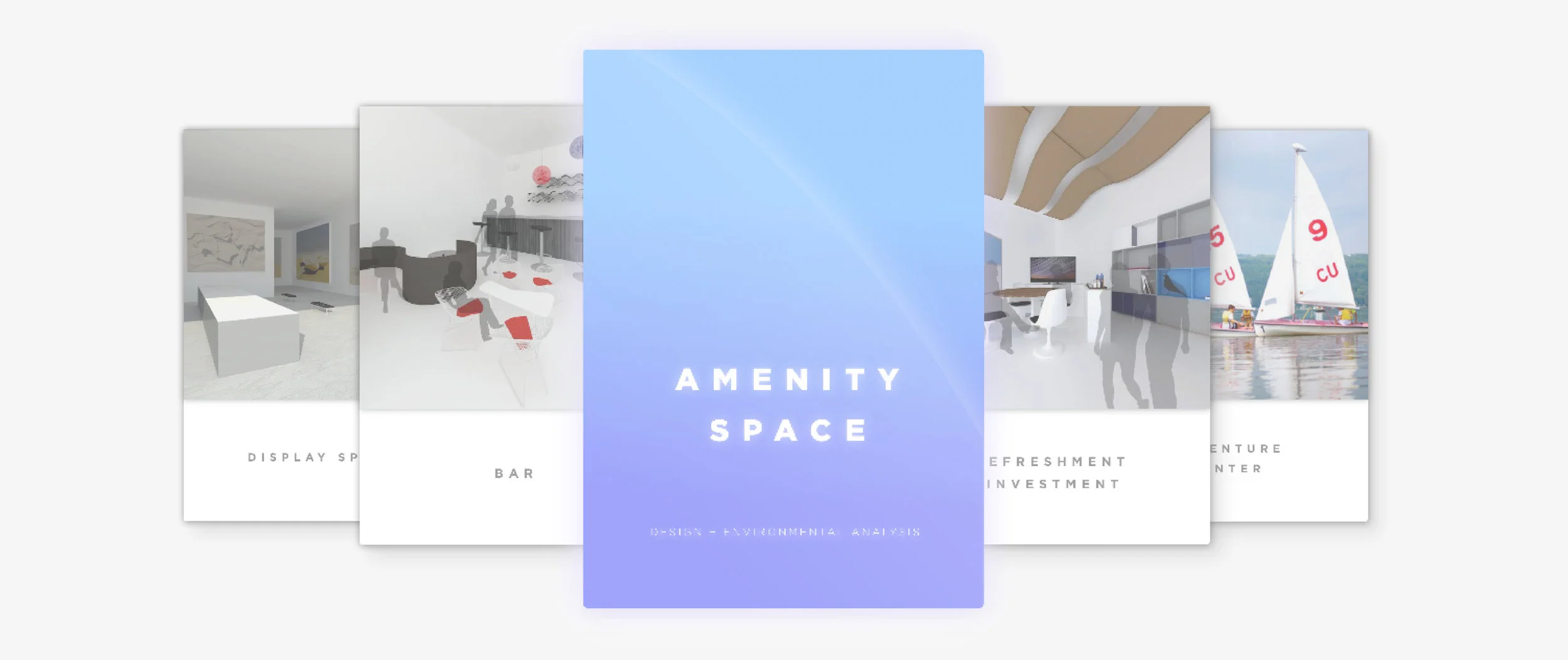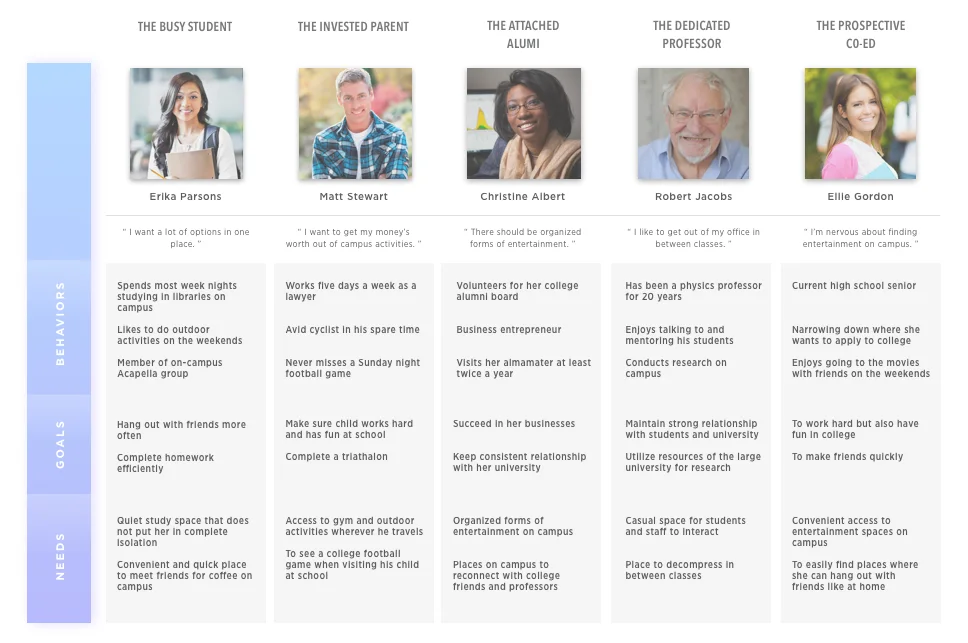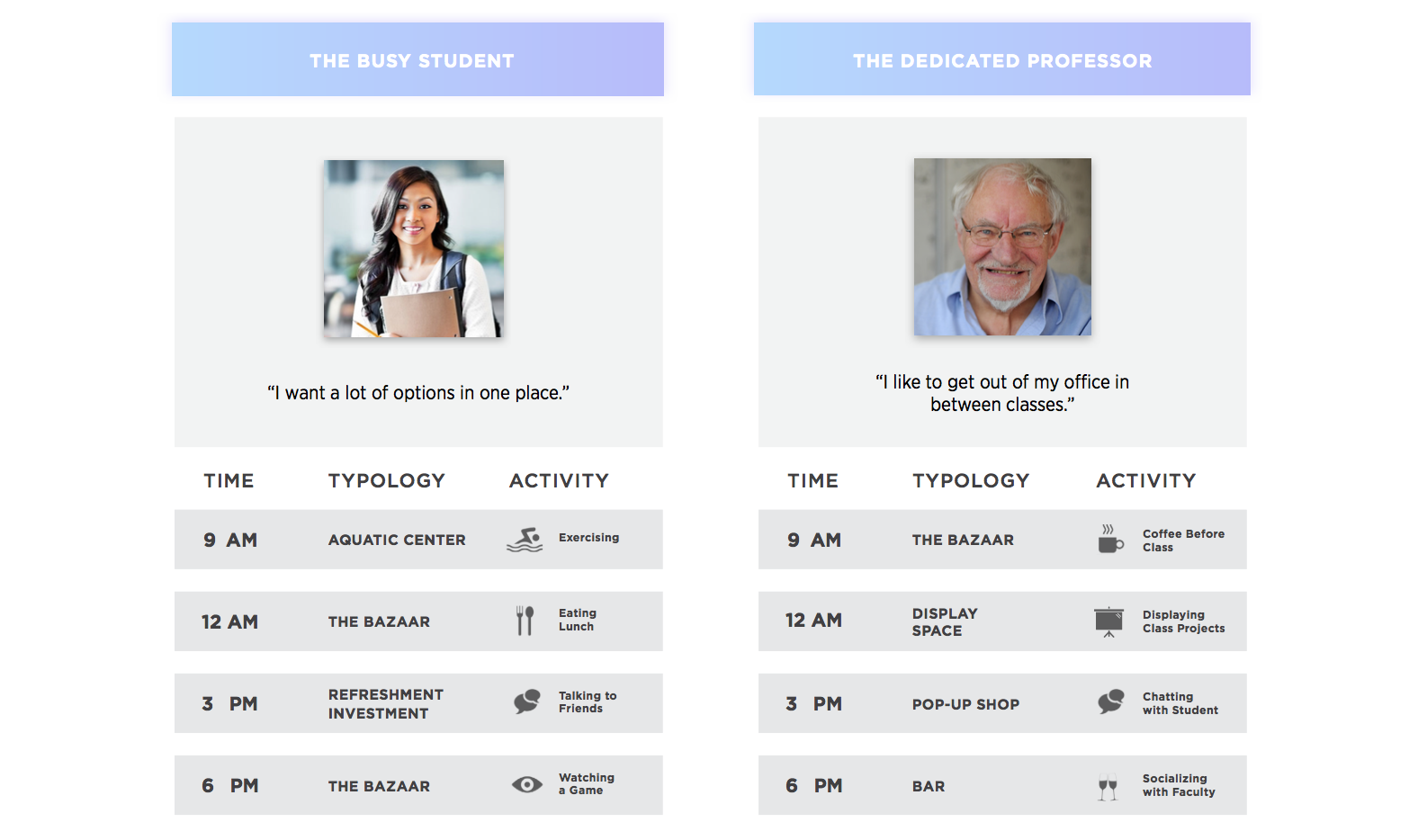
Visual Brainstorming Tool
Creative User Experience Design | 2015 Fall

As a creative solution to increase the ef ciency of design brainstorming session, this card deck helps both designers and client to brainstorm about college amenity spaces by using images, verbal description, and installation notes. Our group was focusing on research and develop a card deck for entertainment aspect of amenity space, other groups were working on gallery, gathering, food, information, making, nature, and work-life-balance spaces.
Group: Rebecca Merenbach | Madeline Winer | Kayla Wong | Jiaming Zhang
Research Phase
Primary Research, Case Study, Observation
Primary Research
WHY ARE AMENITIES BECOMING SO IMPORTANT?
INCREASING STRESS LEVELS AND MENTAL HEALTH ISSUES AMONG COLLEGE STUDENTS ACROSS THE U.S.
COMPETITION IS FIERCE TO ATTRACT THE BEST STUDENTS
AMENTITY SPENDING IS CLOSING IN ON ACADEMIC SPENDING

NOTE: Data include individuals, ages 15 to 49, who were enrolled full time at a university or college. Data include non-holiday weekdays and are averages for 2010-14.
SOURCE: Bureau of Labor Statistics, American Time Use Survey
On average, full-time university and college students are only spending 4.1 hours a day towards leisure and sports activities, which averages to only 20.5 hours a school week
Case Study
a look into how colleges are bringing in entertainment

Key Findings
The variety of entertainment spaces differs at colleges and universities across the country based on their academic competitiveness
Entertainment spaces help to bridge a gap between college campuses and the surrounding community
Entertainment spaces are used as an important tool to improve the well-being and happiness of the student body
College and universities are spending a great deal of money on expanding and improving their entertainment facilities
Colleges and universities are already starting to revise what we traditionally think of as campus entertainment spaces
Observations
existing entertainment spaces at Cornell University


Analysis Phase
Interviews, Personas
Interviews
gaining new perspectives and insights from users

Personas
The personas we created allowed us to analyze the most important needs of the users of these college campus entertainment spaces.

Scenarios
Thinking about the entertainment spaces that different types of people would use helped us to develop what typologies were most relevant to include in our limited amount of cards.

User Testing
When we conducted user testing with our Entertainment card deck, we were primarily struggling with making sure we covered the full scope of entertainment spaces while also trying to condense our deck from 15 to 12 cards. Therefore, the questions we asked our users were mostly to get feedback on this specific issue.
What we found from asking our users these targeted questions was they felt we had done a good job of covering the range of entertainment spaces that would ideally be on a college campus. But, most users also expressed that some of the categories we had seemed too similar to warrant being distinct. From this feedback we were able to finalize our decision about which categories we wanted to combine. For example, after our users noticed that the typologies of “performance space” and “movie theater” had very similar arrangements, we decided to combine these categories into one “Viewing Are.
Design Phase
Space Creation (Sketchup, Vray, Photoshop, Sketching), Prototyping
We've created physical card deck with space reference image, space function description, installation requirements and limitatons.


